October 25th Scots Book of Days
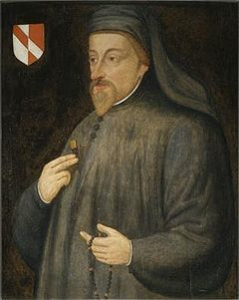 October 25 – 287 Crispin and Crispinian Martyrs at Rome. For centuries these martyrs were honored in Scotland. Crispin Court is in Creetown Scotland. St Crispin’s School is in Edinburgh.
October 25 – 287 Crispin and Crispinian Martyrs at Rome. For centuries these martyrs were honored in Scotland. Crispin Court is in Creetown Scotland. St Crispin’s School is in Edinburgh.
1230 Gilbert de Clare, 5th Earl of Hertford died. Surety of the Magna Charta. Gilbert’s daughter, Isabel, married Robert De Brus, 5th Lord of Annandale, ancestor of the Scots Royal line from King Robert the Bruce.
1326 Invasion of England (1326) Isabella of France the She-wolf of France, was Queen consort and pursues Edward II of England who is forced to return to Cardiff.
1400 – Geoffrey Chaucer, English poet died. Born between 1340 and 1343. Influences Scot’s literature.
Portrait of Chaucer from the 17th century.
1415 Battle of Agincourt, France. Henry V. Saint Crispin’s Day.
http://www.historic-uk.com/HistoryUK/HistoryofScotland/The-Auld-Alliance-France-Scotland/
Dating back to 1295, the Auld Alliance was built upon Scotland and France’s shared interests in controlling England’s aggressive expansion plans. Drawn up by John Balliol of Scotland and Philip IV of France, it was first and foremost a military and diplomatic alliance, but for most ordinary Scots it brought more obvious benefits through jobs as mercenaries in France’s armies and of course, a steady supply of fine French wines.
Henry V’s victory at the Battle of Agincourt in 1415 was one of England’s greatest military achievements, but for the French it was a disaster on such a scale that it led to the near collapse of the country. In desperation the French Dauphin turned to the Scots, England’s traditional enemy, for help. As always, anxious for a fight with the Auld Enemy, more than 12,000 Scots boarded ships bound for France. And they didn’t have to wait too long: in 22 March 1421 at the Battle of Bauge the Scots defeated the English army, killing the Duke of Clarence.
The original alliance that granted dual citizenship in both countries, Scotland and France, was eventually revoked by the French government in 1903, at least according to this source. As Scotland abandoned France in 1560, only to return as an ally from 1716 to 1731 and again with the Entent Cordiale of April 8, 1904.
1514 – William Elphinstone, Scottish bishop and statesman (b. 1431)
 1587 Mary Queen of Scots convicted of treason under the Act for the Queen’s Safety before a court of 36 English noblemen. She was denied the opportunity to review the evidence or her papers that had been removed from her, that she was denied access to legal counsel and that as a foreign anointed queen she had never been an English subject and thus could not be convicted of treason.
1587 Mary Queen of Scots convicted of treason under the Act for the Queen’s Safety before a court of 36 English noblemen. She was denied the opportunity to review the evidence or her papers that had been removed from her, that she was denied access to legal counsel and that as a foreign anointed queen she had never been an English subject and thus could not be convicted of treason.
Photo by John Choate in the National Security Agency library at Fort Meade Maryland. The Upside down T is a substitute code for the letter U and V, in Mary’s cryptographic code used while captive at Fotheringhay estate.
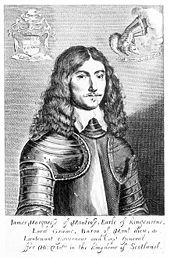 1612 James Graham, 1st Marquess of Montrose (1612 – 1650) born, chief of Clan Graham. He was the only son of John Graham, 4th Earl of Montrose and Mary Ruthven. His maternal grandparents were William Ruthven, 1st Earl of Gowrie, and Dorothea, a daughter of Master of Methven, son of Henry Stewart, 1st Lord Methven and his wife Margaret Tudor.
1612 James Graham, 1st Marquess of Montrose (1612 – 1650) born, chief of Clan Graham. He was the only son of John Graham, 4th Earl of Montrose and Mary Ruthven. His maternal grandparents were William Ruthven, 1st Earl of Gowrie, and Dorothea, a daughter of Master of Methven, son of Henry Stewart, 1st Lord Methven and his wife Margaret Tudor.
James Graham, 1st Marquess of Montrose
James Graham became 5th Earl of Montrose by his father’s death in 1626. He was educated at the University of St Andrews, and at the age of seventeen married Magdalene Carnegie, daughter of David Carnegie (afterwards Earl of Southesk). They were parents of James Graham, 2nd Marquess of Montrose.
1752 Robert Millar (of Glasgow and Paisley from 1709) died in 1752; during the years just prior to his death he was a member of the Synod of Glasgow and Ayr. The Paisley presbytery register for 25 October 1752 excuses his non-attendance ‘thro’ infirmity of old age’; The New Statistical Account notes Robert Miller of Glasgow and Paisley (from 1709) as ‘a man distinguished for learning and piety. He was author of the History of the Propagation of Christianity and other works illustrative of the scriptures and the history of the church.’ (Vol. VII, Renfrew and Argyle). The other works included a major History of the Church under the Old Testament from the Creation of the World, published in Edinburgh in 1730 and reprinted in eight volumes at Paisley in 1789. At the time of Nisbet’s writing, Robert Miller of Paisley, ‘as now the Representative of the ancient family of Millar of Temple and Killoch, carries for Arms, Argent, a Cross molinee, Gules, with a Border Checcuue Azure and of the first, as descended, on the Maternal Line, from the ancient Family of Stewart Lord Ochiltree, Clest, a Dexter Hand holding a Book open, with the Motto Felicem reddit Religio.’ YYMA 72.
1760 George 2nd King of English and Scots died, age 77, 33rd year of his reign. Tytler’s Britannica 274, History of Scotland.
1788 Jane Millar died at her house in Pall Mall on 25 Oct. 1788, aged 81. Jane, remarried Sir Archibald Grant of Monymusk, Aberdeenshir Ayrshire Scotland. Jane was the widow of Andrew Millar (1707-1766) In 1729 Millar established himself in the Strand, first near St. Clement’s Church, and afterwards at Tonson’s old shop, ‘The Shakespeare’s Head’ (re-christened Buchanan’s Head), over against Catherine Street, where he speedily realised a handsome fortune. Millar was careful to surround himself with capable advisers as to the purchase of copyright. Millar’s liberality to authors led Johnson to say of Millar in 1755: ‘I respect Millar, sir; he has raised the price of literature’ (Boswell, Life of Johnson, ed. Hill, i. 287). Millar paid Thomson in 1729 137l. 10s. for ‘Sophonisba’ and ‘Spring,’ and in 1738 105l. for the sole right of publishing the ‘Seasons.’ For Armstrong’s ‘Œconomy of Love’ he gave fifty guineas. Fielding received from Millar 183l. 11s. for ‘Joseph Andrews’ (1742), 600l. for ‘Tom Jones’ (1749), and an additional 100l. upon its success (Walpole, Letters, ed. Cunningham, ii. 163), while 1,000l. was allowed for ‘Amelia’ (1751), of which, thanks to some ingenious devices adopted by Millar, a second edition was called for on the day of publication. Fortunately for Millar, Mallet refused his offer of 3,000l. for the copyright of Bolingbroke’s ‘Works;’ the editor had afterwards to borrow money from Millar to get the book printed. Dictionary of National Biography, 1885-1900, Volume 37
1812 The Macedonia is captured by an American frigate named the United States. Tytler’s Britannica
1818 Duncan McDougall, Junior, of Scotland, joined the Pacific Fur company of John Jacob Astor as a partner in 1810, helping found Fort Astoria in 1811. McDougall married in 1813 Elvamox, daughter of Chief Comcomly, and McDougall died October 25, 1818 in the winter on Lake Winnipeg. 5th generation descendant, John Christopher Stevens, Ambassador to Libya, assassinated in Benghazi Libya September 11, 2012. Stevens is given as 1/16th Chinook, a confederacy along the Pacific coastline in present day Oregon and Washington.
Gl enn Beck claims “Benghazi-gate”, “as the old catchphrase goes, When Clinton lied, no one died.” About Stevens’ Scots and Chinook lineage.
enn Beck claims “Benghazi-gate”, “as the old catchphrase goes, When Clinton lied, no one died.” About Stevens’ Scots and Chinook lineage.
1831 Joseph Smith the Prophet, at Hiram, Ohio. (Clans Huntley, Hamilton, Mackenzie, Mack of Inverness, Malcolm King of Scots). Doctrine and Covenants 66. That they might have life and be made partakers of the glories.
“Breathes there the man with soul so dead, Who never to himself hath said, This is my own, my native land.” Sir Walter Scott, The Lay of the Last Minstrel 1805
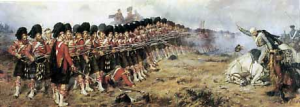 1854 The Battle of Balaclava (the Charge of the Light Brigade, the Charge of the Heavy Brigade and the Thin Red Line). Crimean War, Ukraine. Royal Scots Greys: now the Royal Scots Dragoon Guards.
1854 The Battle of Balaclava (the Charge of the Light Brigade, the Charge of the Heavy Brigade and the Thin Red Line). Crimean War, Ukraine. Royal Scots Greys: now the Royal Scots Dragoon Guards.
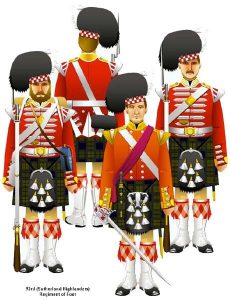 The Thin Red Line : The 93rd Highlanders: now the Argyll and Sutherland Highlanders. All these regiments have Balaclava as a battle honour.
The Thin Red Line : The 93rd Highlanders: now the Argyll and Sutherland Highlanders. All these regiments have Balaclava as a battle honour.
The Sutherland Highlanders – from Tim Reese.
93rd Highlanders repel the Russian Cavalry. The only British troops between the Russian force and the port were the two cavalry brigades 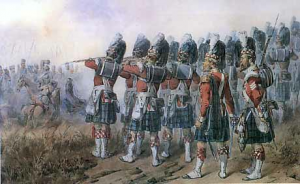 which had their encampments in the valley, the 93rd Highlanders and a small force of marines. The Thin Red Line:
As the force of Russian cavalry came over the lip of the Causeway Heights before engaging the Heavy Brigade, a force of four squadrons detached from the main body and headed directly for Balaclava. In their path lay the 93rd Highlanders under Sir Colin Campbell, the commander of the Highland Brigade. As the Russians approached, Campbell brought the 93rd from concealment and formed line across the cavalry’s line of advance. The staff on Sapouné Hill saw what William Russell, the Times correspondent, described as a “thin red line tipped with steel” (in his initial report the expression used was “a thin red streak…”)
which had their encampments in the valley, the 93rd Highlanders and a small force of marines. The Thin Red Line:
As the force of Russian cavalry came over the lip of the Causeway Heights before engaging the Heavy Brigade, a force of four squadrons detached from the main body and headed directly for Balaclava. In their path lay the 93rd Highlanders under Sir Colin Campbell, the commander of the Highland Brigade. As the Russians approached, Campbell brought the 93rd from concealment and formed line across the cavalry’s line of advance. The staff on Sapouné Hill saw what William Russell, the Times correspondent, described as a “thin red line tipped with steel” (in his initial report the expression used was “a thin red streak…”)
Hamley reports that the 93rd fired one volley at extreme range and the Russian cavalry withdrew. Other authorities state that the highlanders fired a second volley, also at considerable range. The unyielding presence of the single Highland regiment caused the Russians to abandon their intention of taking Balaclava.
http://www.britishbattles.com/crimean-war/balaclava.htm
- Campbell Earl of Argyll 1010 2Montgomery2Blair 2Cochrane2Miller 2Simmons2Choate to zoe TOAG
1859 Thomas Babington Macaulay, 1st Baron Macaulay PC (25 October 1800 – 28 December 1859) was a British historian and Whig politician. The son and eldest child of Zachary Macaulay, a Scottish Highlander who became a colonial governor and abolitionist, ‘’Scotland came fully into its own and from then until now it has been a commonplace that 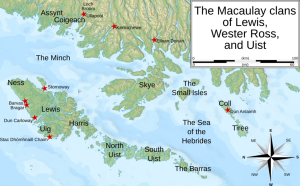 English history is incomprehensible without Scotland”. Macaulays of Lewis. The Macaulay family of Uig in Lewis, known in Scottish Gaelic as Clann mhic Amhlaigh, were a small family located around Uig on the Isle of Lewis in the Outer Hebrides of Scotland.
English history is incomprehensible without Scotland”. Macaulays of Lewis. The Macaulay family of Uig in Lewis, known in Scottish Gaelic as Clann mhic Amhlaigh, were a small family located around Uig on the Isle of Lewis in the Outer Hebrides of Scotland.
The Lewis Macaulays were centred at Uig, on the Isle of Lewis. Wikipedia. In 1877 Seventeen Eminent Scots’ Spirits, with Macaulay, appeared to and requested Baptism from Wilford Woodruff, President of the Saint George Temple, WASHINGTON, Utah 22-23 August 1877. Woodruff’s eminent men – Scots
1942 The Battle of El Alamein is usually divided into five phases, consisting of the break-in (23–24 October), the crumbling (24–25 October), the counter (26–28 October), Operation Supercharge (1–2 November) and the breakout (3–7 November). No name is given to the period from 29–31 October, when the battle was at a standstill.
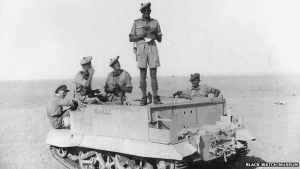 BBC Scotland searched the Commonwealth War Graves Commission’s database using the names of Scottish counties to create this data set. The mandate of the commission, formed in 1917, is to ensure the commemoration of the 1.7 million people who died in the two world wars and it maintains cemeteries and memorials at 23,000 locations, in 53 countries.
BBC Scotland searched the Commonwealth War Graves Commission’s database using the names of Scottish counties to create this data set. The mandate of the commission, formed in 1917, is to ensure the commemoration of the 1.7 million people who died in the two world wars and it maintains cemeteries and memorials at 23,000 locations, in 53 countries.
Members of the 7th Battalion of the Black Watch regiment train in preparation for El Alamein.
1977 Eric Soren Sorensen born. Married Beth Clare Choate, descendant of Ochiltree, Lord of the Congregation. Luke, Julia, Lucy.
 2005 The Adventures of Greyfriars Bobby Filmed in Scotland and directed by John Henderson. It is set in Edinburgh, Scotland, and tells the story of a West Highland White Terrier called Bobby, who will not leave his master’s grave after his death. Also the plot of Challenge to Lassie 1949. Terrier
2005 The Adventures of Greyfriars Bobby Filmed in Scotland and directed by John Henderson. It is set in Edinburgh, Scotland, and tells the story of a West Highland White Terrier called Bobby, who will not leave his master’s grave after his death. Also the plot of Challenge to Lassie 1949. Terrier
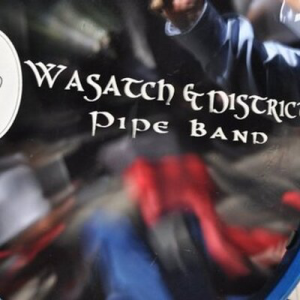 2015 Wasatch & District Grade II are the pipes and drums you hear in this song!
2015 Wasatch & District Grade II are the pipes and drums you hear in this song!
https://twitter.com/WasatchDistrict?ref_src=twsrc%5Etfw
Established in 2004, WDPB is a competitive and performing Bagpipe Band based out of Bountiful, Utah. Wearing the MacTavish tartan, our band performs all over Northern Utah, and competes in the Western US, Canada, the United Kingdom, and we have attended the World Pipe Band Championships held in Glasgow Scotland.
Disclaimer: The author of each article published on this web site owns his or her own words. The opinions, beliefs and viewpoints expressed by the various authors and forum participants on this site do not necessarily reflect the opinions, beliefs and viewpoints of Utah Standard News or official policies of the USN and may actually reflect positions that USN actively opposes. No claim in public domain or fair use. © John Choate.
Utah Standard News depends on the support of readers like you.
Good Journalism requires time, expertise, passion and money. We know you appreciate the coverage here. Please help us to continue as an alternative news website by becoming a subscriber or making a donation. To learn more about our subscription options or make a donation, click here.
To Advertise on UtahStandardNews.com, please contact us at: ed@utahstandardnews.com.


Comments - No Responses to “October 25th Scots Book of Days”
Sure is empty down here...